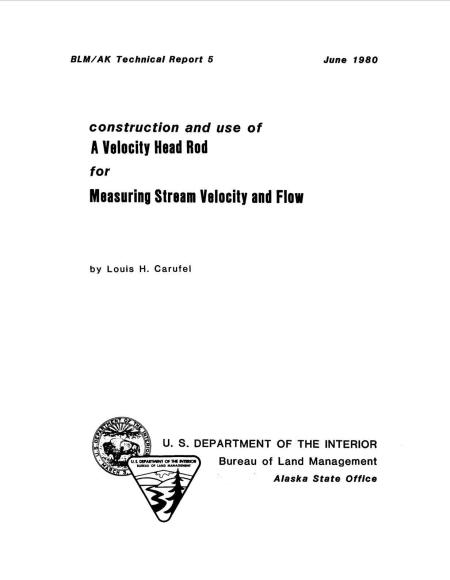Construction and Use of a Velocity Head Rod for Measuring Stream Velocity and Flow

For aquatic habitat surveys, biologists need to measure the stream being studied and the speed or velocity at which the water flows. Several instruments that may be used to measure stream flow velocity are the current meter, the floating chip, and the velocity head rod.
Several years ago, technicians at the USDA Forest Service Equipment Development Center, San Dimas, California, devised a method for calculating stream discharge measurements. They constructed a velocity head rod that is dependable, strong, and economical to make and use. The rod is particularly useful in gauging small volumes of stream flow that have varying amounts of bedload and silt. The basic velocity head rod was developed in 1944 by Wilm and Storey. Although the principle used to design the rod is not new, the rod is simple, portable, easy to construct, accurate within practical limits. It is a useful tool for habitat surveys on streams on public lands administered by the Bureau of Land Management (BLM).
The construction and use of the rod are described in this technical report, with grateful acknowledgment of the source of the information, the USDA Forest Service Equipment Development Center.
